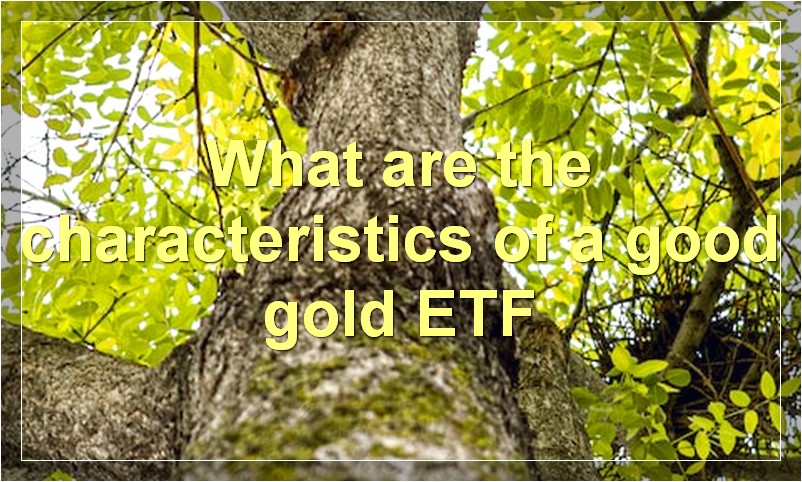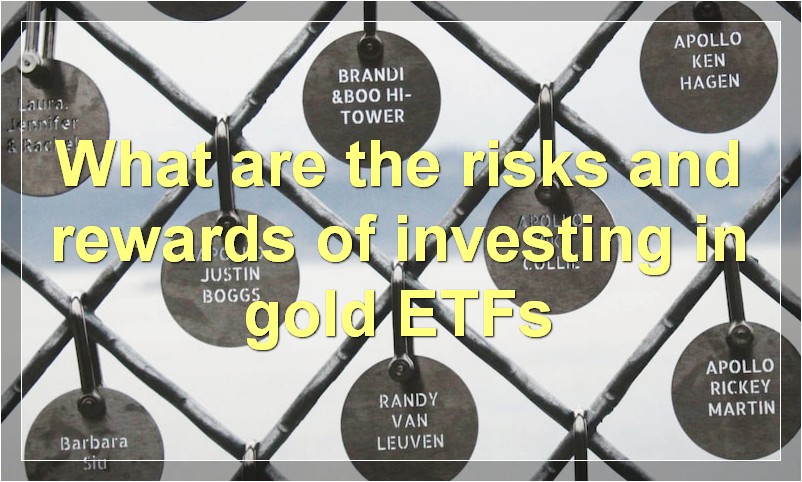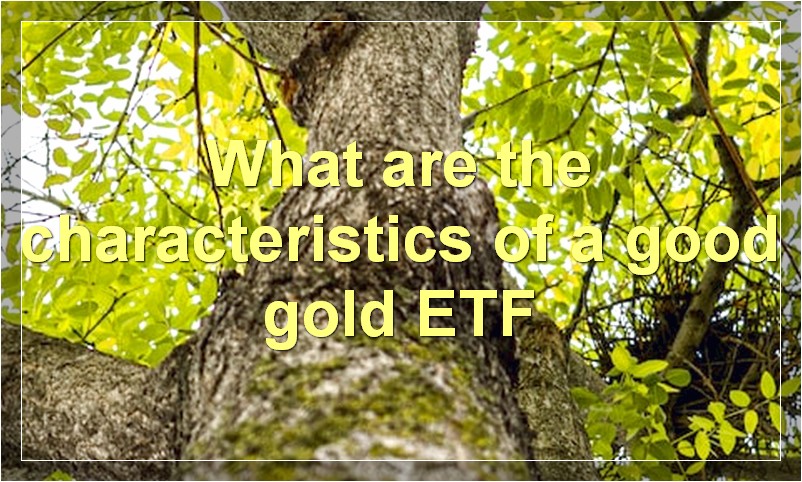If you’re looking to invest in gold, these are the best gold ETFs to buy.
What are the best gold ETFs to buy
There are a variety of gold ETFs to choose from, so it’s important to know what you’re looking for before making a purchase. The three main types of gold ETFs are physical gold, gold miners, and gold streaming and royalty companies.
Physical gold ETFs are the simplest and most popular type of gold ETF. They invest directly in gold bullion, meaning that the fund’s value will move in line with the price of gold. The largest physical gold ETF is the SPDR Gold Trust (GLD), which has over $35 billion in assets.
Gold miner ETFs invest in the stocks of companies that mine for gold. These funds offer exposure to gold without having to directly own the metal. The VanEck Vectors Gold Miners ETF (GDX) is the largest and most popular gold miner ETF, with over $11 billion in assets.
Gold streaming and royalty companies provide financing to gold miners in exchange for the right to stream gold production from their mines. These companies typically have low operating costs and high margins, meaning they can be more profitable than miners when gold prices are rising. The largest gold streaming and royalty company is Franco-Nevada (FNV), which has a market capitalization of over $25 billion.
What are the characteristics of a good gold ETF

When it comes to investing in gold, there are many different ways to do so. One option is to invest in a gold ETF. Gold ETFs are exchange traded funds that track the price of gold. They are a popular choice for investors because they offer a number of advantages.
For starters, gold ETFs are very liquid. This means that they can be easily bought and sold on the stock market. This makes them a great choice for investors who want to be able to quickly and easily cash out their investment if they need to.
Another advantage of gold ETFs is that they offer a great way to diversify your portfolio. By investing in a gold ETF, you can add some exposure to gold without having to invest directly in the metal itself. This can help to reduce your overall risk and improve your chances of achieving your financial goals.
Finally, gold ETFs tend to have low fees. This is because they are not actively managed like some other types of investment funds. This means that you can keep more of your investment returns, which can help you reach your financial goals even faster.
How do gold ETFs compare to other investment options
Gold exchange-traded funds are one option for investing in gold. They are similar to other ETFs in that they trade on an exchange and can be bought and sold throughout the day. Gold ETFs, however, differ from other ETFs in that they track the price of gold rather than a basket of securities. Gold ETFs also tend to have lower expense ratios than other ETFs.
Another option for investing in gold is through mutual funds. Mutual funds that invest in gold typically hold a mix of gold stocks and gold bullion. These funds may be actively managed or passive, and they typically have higher expense ratios than ETFs.
Finally, investors can also buy gold directly through bullion dealers or coin dealers. This is generally the most expensive way to invest in gold, as there are costs associated with buying, storing, and insuring the gold.
Why are gold ETFs a good investment option
Gold ETFs are a good investment option because they offer a safe and convenient way to invest in gold. They are also easy to trade and can be bought and sold just like any other stock.
How do I choose the best gold ETF for me
When it comes to investing in gold, there are a few different ways to go about it. You can buy physical gold, invest in gold mining companies, or purchase gold ETFs. Gold ETFs are a popular option because they offer the convenience of an investment that is easy to buy and sell, and they can be traded like any other stock.
There are a few different factors to consider when choosing the best gold ETF for you. The first is whether you want to invest in gold bullion or gold mining stocks. If you’re looking for exposure to the metal itself, then a gold bullion ETF is likely the best choice. However, if you’re more interested in the companies that mine and produce gold, then a gold mining stock ETF may be a better option.
Another factor to consider is the expense ratio of the ETF. The expense ratio is the annual fee that the fund charges, and it’s important to choose an ETF with a low expense ratio. This will help to keep more of your investment gains instead of paying fees to the fund manager.
Finally, consider whether you want a broad-based or narrow-based ETF. Broad-based ETFs invest in a variety of gold-related investments, while narrow-based ETFs focus on just one aspect of the gold market. For example, there are ETFs that focus solely on gold mining stocks or on gold bullion.
Once you’ve considered these factors, you can begin to research specific gold ETFs. Start by looking at the performance of the ETF over time and compare it to other similar funds. Also, read reviews from other investors and financial professionals to get their insights on the best gold ETFs. With this information in hand, you’ll be able to choose the best gold ETF for your needs and goals.
What are the risks and rewards of investing in gold ETFs

When it comes to investing in gold ETFs, there are both risks and rewards to consider. On the one hand, gold is a precious metal that has been used as a store of value for centuries. Gold is also relatively rare, which means that it can be a volatile asset. On the other hand, gold is a very popular investment, and ETFs offer investors exposure to gold without having to hold the physical metal.
Investing in gold ETFs can be a risky proposition, but it can also be a rewarding one. Investors should do their homework and understand the risks and rewards before investing.
What have been the historical returns of gold ETFs
Gold ETFs have been one of the best performing asset class in the last decade. The historical returns of gold ETFs have been impressive, with an average annual return of over 20%. Gold ETFs offer investors exposure to the precious metal without having to take on the risks associated with physical ownership. Gold ETFs are also a convenient and cost-effective way to invest in gold.
What is the outlook for gold ETFs
The outlook for gold ETFs is bullish. Gold ETFs have been one of the best-performing asset class in 2020, with returns of over 25%. The demand for gold ETFs is being driven by investors seeking safe haven assets amid global economic uncertainty. Central banks are also increasingly turning to gold as a reserve asset. The World Gold Council expects global gold demand to reach a record high in 2020.
Are there any tax considerations when investing in gold ETFs
When it comes to investing in gold ETFs, there are a few tax considerations to keep in mind. First of all, if you’re holding the ETF in a taxable account, you’ll be responsible for paying capital gains taxes on any profits when you sell. Additionally, if you’re using a gold ETF as part of a retirement strategy, there may be some limitations on how and when you can access your funds without incurring penalties. So, it’s always best to consult with a financial advisor or tax professional before making any decisions about investing in gold ETFs.
What are some tips for investing in gold ETFs
When it comes to investing in gold ETFs, there are a few things you need to keep in mind. First and foremost, you need to make sure that the ETF you choose is backed by a reputable organization. Secondly, you need to pay attention to the fees associated with the ETF. Lastly, you need to diversify your portfolio by investing in other asset classes as well.

